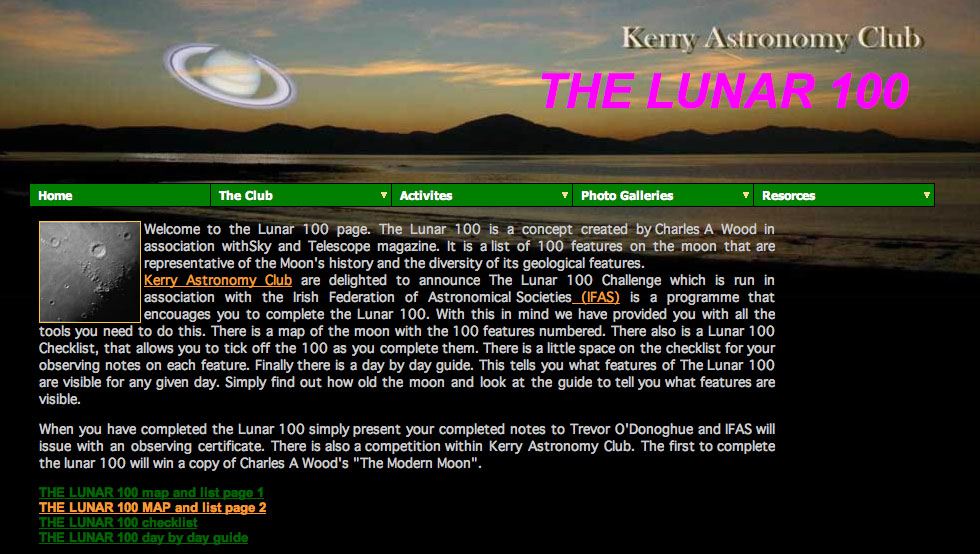
image from Kerry Astronomy Club
No other place in the universe observable from your backyard has such a wealth of visible features as the Moon. In fact, the richness of detail overwhelms many observers who don’t really know what they are seeing, can’t find their way around and get frustrated. The Lunar 100 list was created to provide guidance for learning about the Moon by listing interesting features from the easiest to find to quite challenging ones. The idea is not just to find them but to understand what they tell us about the Moon. The L100 is now being used in some astonomy organizations to encourage and train members to observe the Moon. For example, Trevor O’Donoghue has created a Lunar 100 Challenge for the Kerry Astronomy Club in southwest Ireland. The webpage has resources to help identify and observe the objects, including a listing of which are available each night of a lunation. What are you waiting for to observe them all?
COMMENTS?
Click on this icon File:PostIcon.jpg at the upper right to post a comment.



